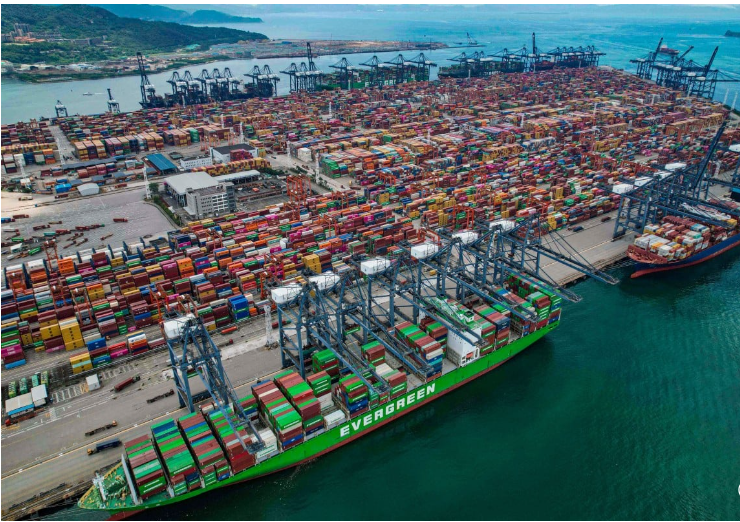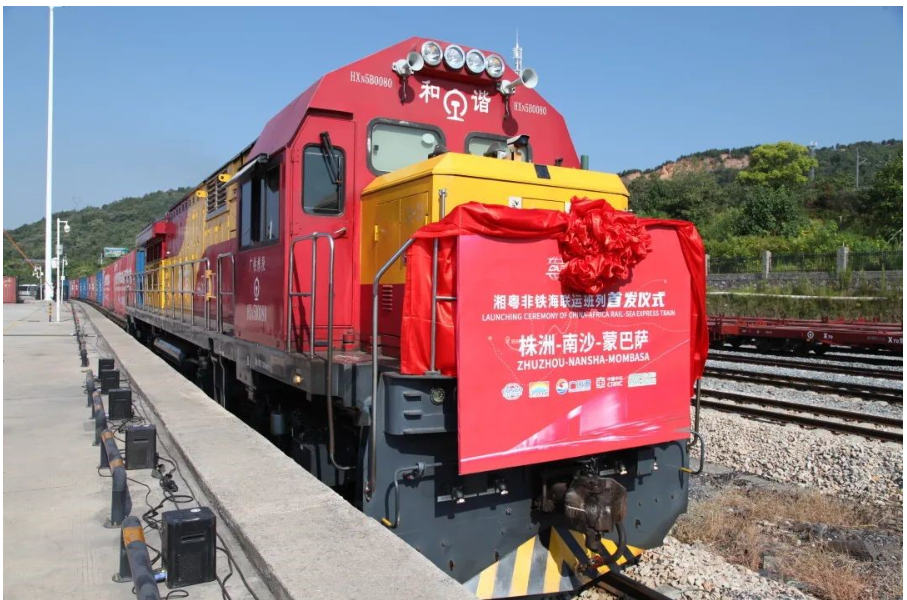 China’s ambitious sea-rail transport link plan for Africa is a significant part of its broader Belt and Road Initiative (BRI), aimed at enhancing trade and infrastructure connectivity across the globe. The strategy seeks to combine maritime routes with rail networks to facilitate smoother, faster, and more cost-effective transport of goods between Africa and the global market. This approach bears a striking resemblance to the “Hunan model,” a domestic transport and development strategy successfully implemented in China, particularly in the province of Hunan.
China’s ambitious sea-rail transport link plan for Africa is a significant part of its broader Belt and Road Initiative (BRI), aimed at enhancing trade and infrastructure connectivity across the globe. The strategy seeks to combine maritime routes with rail networks to facilitate smoother, faster, and more cost-effective transport of goods between Africa and the global market. This approach bears a striking resemblance to the “Hunan model,” a domestic transport and development strategy successfully implemented in China, particularly in the province of Hunan.
The Hunan model refers to the integrated transportation and industrial development strategy adopted by the province, which involves synchronizing rail and sea networks to enhance economic growth. This model has proven highly effective in transforming Hunan into a major transportation hub within China and has contributed to the region’s rapid economic rise. In this sense, the sea-rail transport link for Africa mirrors this successful formula, adapted to the continent’s unique needs.
The Hunan model is based on a multi-modal transportation system that links inland areas with coastal ports via efficient rail networks. Historically, the province of Hunan was landlocked and underdeveloped, facing challenges in accessing the global market due to its geographical location. However, through a series of well-planned infrastructure projects, Hunan connected its inland cities with coastal ports through rail and river transport networks, facilitating the smooth movement of goods for export.
By integrating industries along these transport corridors, Hunan was able to attract significant investment and become a hub for manufacturing, logistics, and trade. This transformation has made the province an important part of China’s domestic supply chains and a critical link in global trade routes.
The development of an integrated rail and sea transport system to connect inland regions to coastal ports, facilitating smoother export routes.
Strategic Industrial Corridors Building industrial zones along these transport networks to attract manufacturing and investment, thereby boosting economic growth. Collaboration between government and private enterprises to finance and implement large-scale infrastructure projects.
China’s sea-rail transport link for Africa is heavily inspired by the Hunan model, with the goal of improving the continent’s connectivity, infrastructure, and trade capabilities. Africa, like Hunan before its transformation, suffers from poor infrastructure and fragmented internal transport networks, which hinder trade and economic growth.
By adapting the Hunan model to Africa, China aims to replicate the success of its integrated transport strategy. The sea-rail transport plan involves building and expanding port facilities on Africa’s coasts, while simultaneously developing or upgrading railways that connect these ports with inland regions. This will allow landlocked countries and regions to access international markets via coastal ports more efficiently.
Some key similarities between the Hunan model and the sea-rail transport plan for Africa include:
Improved Infrastructure and Connectivity Much like Hunan, many African nations face challenges due to poor infrastructure, particularly in linking inland regions to global trade networks. China’s plan emphasizes building efficient rail systems to connect landlocked countries such as Ethiopia, Rwanda, and Uganda with coastal ports like those in Kenya and Djibouti, facilitating greater access to international markets.
Industrial Hubs Along Transport Corridors The African strategy also involves the establishment of industrial zones along these newly developed transport corridors, mirroring the Hunan approach. This is meant to attract investment, create jobs, and develop manufacturing bases close to transport routes, allowing for the quicker and cheaper movement of goods. For instance, China has been heavily involved in establishing Special Economic Zones (SEZs) in countries like Ethiopia and Kenya, where manufacturing is being promoted along these rail links.
 Port-Rail Synergy Much like the Hunan model’s integration of rail and port infrastructure, the sea-rail transport link will harmonize port expansion with inland rail networks in Africa. Projects such as the Mombasa-Nairobi Standard Gauge Railway (SGR) in Kenya and the Addis Ababa-Djibouti railway exemplify this strategy. These railways, funded and built by Chinese companies, serve as vital connectors between inland production areas and coastal ports, streamlining the movement of goods.
Port-Rail Synergy Much like the Hunan model’s integration of rail and port infrastructure, the sea-rail transport link will harmonize port expansion with inland rail networks in Africa. Projects such as the Mombasa-Nairobi Standard Gauge Railway (SGR) in Kenya and the Addis Ababa-Djibouti railway exemplify this strategy. These railways, funded and built by Chinese companies, serve as vital connectors between inland production areas and coastal ports, streamlining the movement of goods.
The sea-rail transport link plan is part of China’s larger economic strategy in Africa, where the country has rapidly expanded its influence through infrastructure investments under the Belt and Road Initiative. By enhancing transport connectivity, China not only seeks to facilitate trade between Africa and the rest of the world but also aims to secure access to Africa’s vast natural resources.
Furthermore, China’s emphasis on building rail and port infrastructure aligns with its goals to foster long-term economic partnerships with African nations, promoting local industrialization and reducing Africa’s dependency on raw material exports. This shift toward manufacturing and value-added industries is expected to boost Africa’s participation in global value chains, much like how Hunan became an essential cog in China’s domestic and international trade.
Despite the ambitious nature of the sea-rail transport plan, challenges abound. Africa’s diverse political landscape, financial constraints, and security issues in some regions pose potential roadblocks to the smooth implementation of these infrastructure projects. Additionally, concerns about debt sustainability have been raised, with critics cautioning that some African countries may face difficulty repaying the loans for these large-scale projects, leading to potential economic dependencies on China.
However, if successfully implemented, the sea-rail transport link plan has the potential to unlock immense economic growth in Africa, just as the Hunan model did for its namesake province in China. By fostering better connectivity, industrial development, and trade opportunities, this strategy could transform Africa’s role in global commerce, offering a path to sustained economic development and integration into global supply chains.
In conclusion, China’s sea-rail transport link plan for Africa is more than just an infrastructure project; it is a grand vision for Africa’s economic future that draws heavily from the successful strategies implemented in Hunan. As Africa continues to urbanize and develop, integrated transport solutions like these could play a pivotal role in shaping the continent’s economic trajectory in the decades to come.
Ennywealth


